
Jones Pass -> Herman Gulch CDT Shuttle
Possibly the highest-elevation bike-legal traverse in the USA.
Mountain Biking Severe
- Distance
- 13 km
- Ascent
- 406 m
- Descent
- 1.1 km
- Duration
- 0-1 hrs
- Low Point
- 3.1 km
- High Point
- 4 km
- Gradient
- 10˚

The section of the CDT from Jones Pass to Herman Gulch is one of the highest-elevation ridgeline traverses in the state of Colorado that's bike-legal. In fact, with a max elevation of 13,208 feet on the top of Hassell Peak, the author is unaware of a more oxygen-deprived traverse in the entire Rocky Mountain West! While a few 14ers are indeed bike-legal, the epic beauty of this trail is wrapped up in its eminently rideable ridgeline and the stupendous singletrack traversing, all at a mind-boggling elevation.
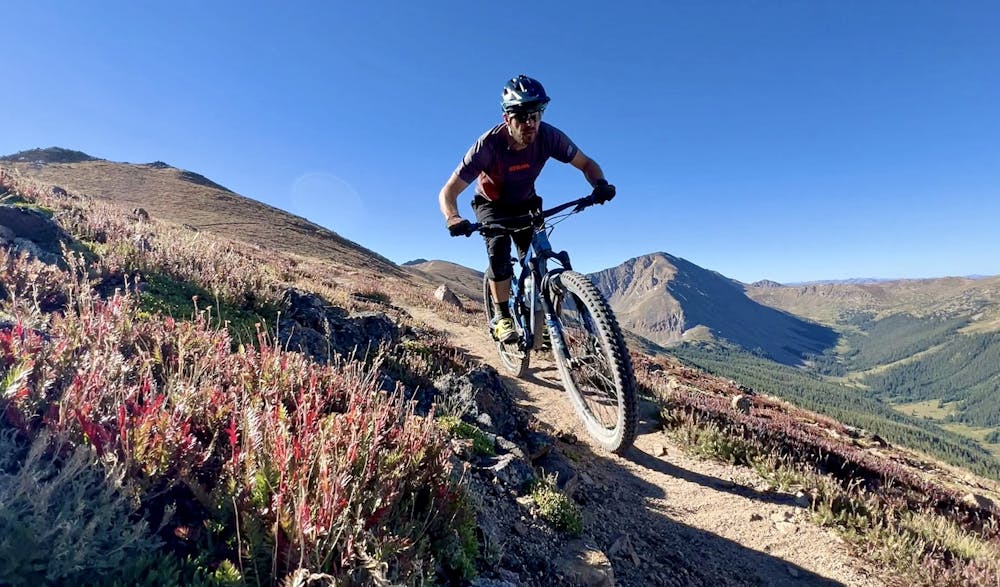
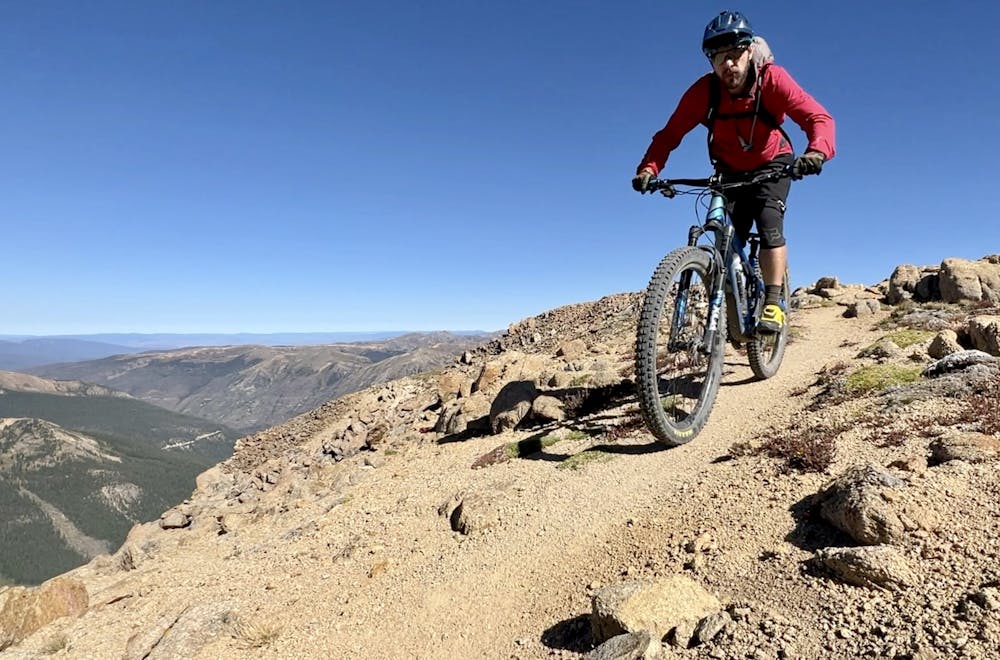

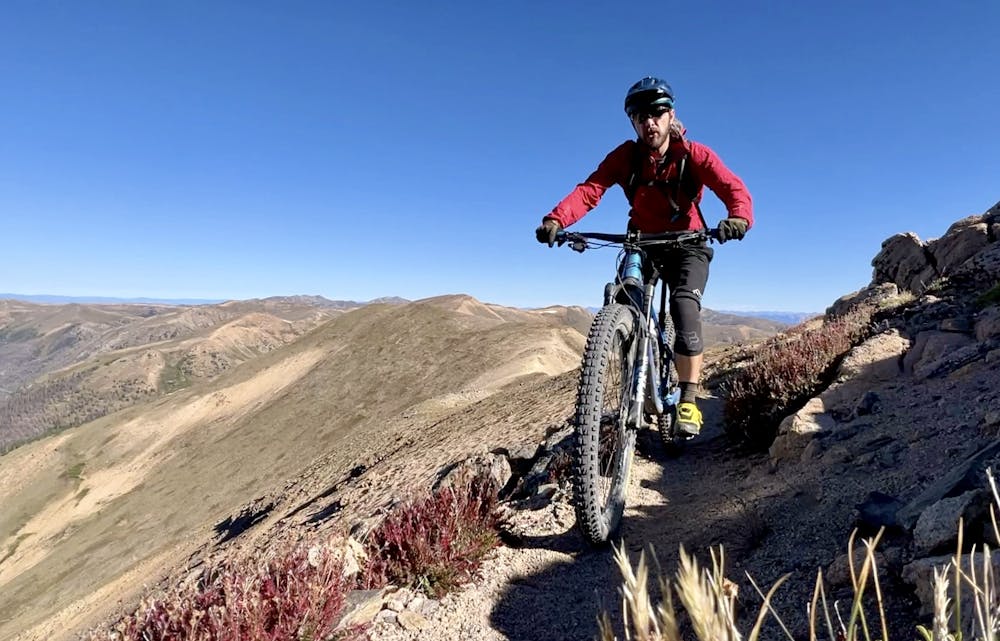

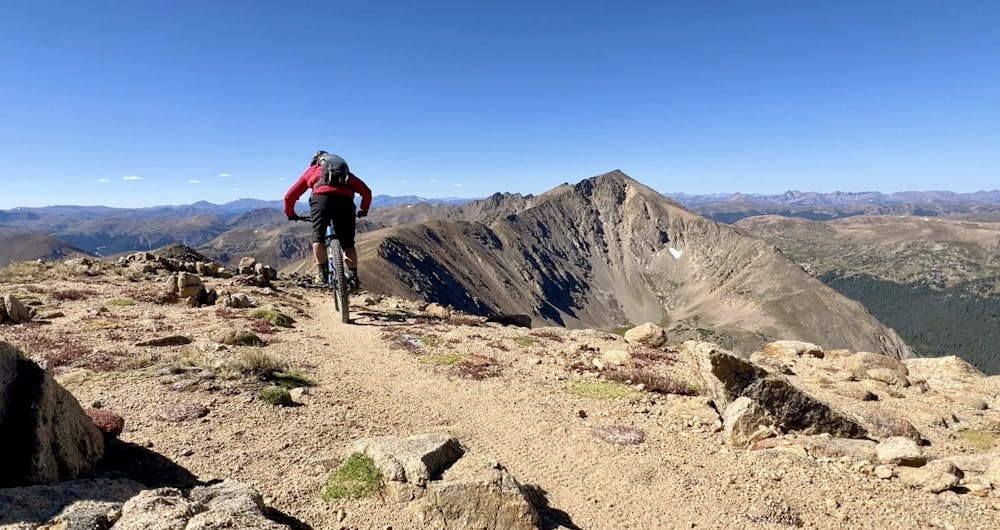

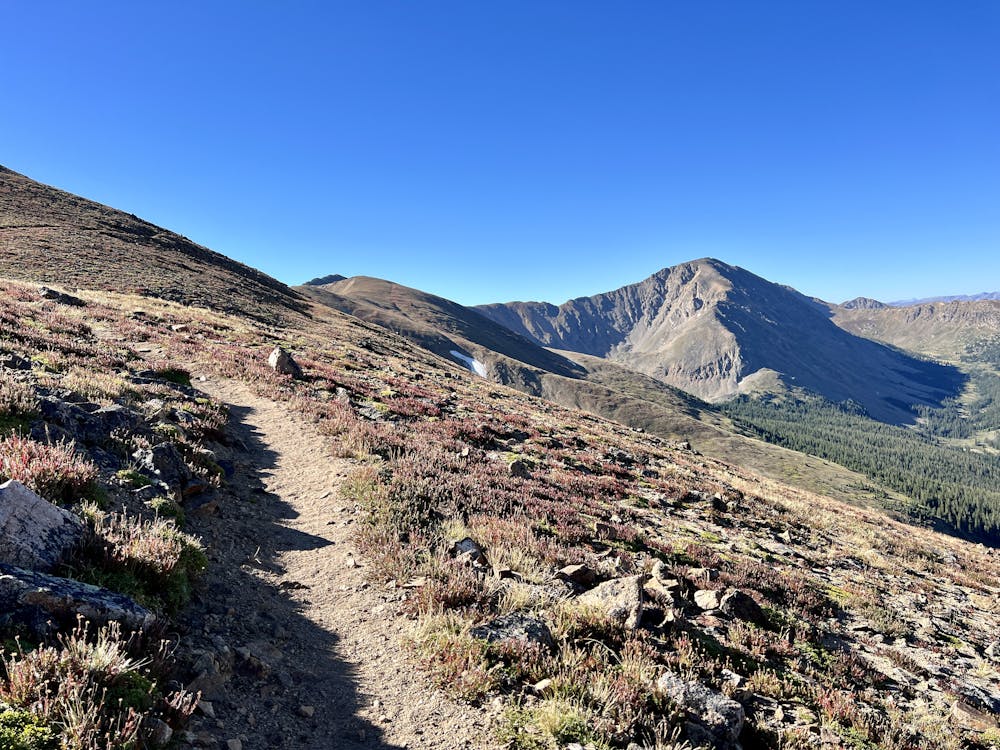

- •
- •
- •
- •
- •
- •
- •
- •
- •
Description
It's highly recommended to complete this ride as a shuttle run. As you drive slowly up Jones Pass Road while running the shuttle, you'll see why: this would be an absolute bear to pedal! While the road to the top is remarkably rated for two-wheel-drive vehicles the entire way, it does get extremely narrow, steep, and loose in places, meaning that some vehicles will have a difficult time making it all the way to the top. But even if you don't quite make it all the way, the driving will save you thousands of feet of arduous uphill slogging!
From the top of Jones Pass, the singletrack begins climbing immediately. While the stats look quite reasonable—only 1,332 feet of climbing to reach a whopping 3,488 feet of descending—almost all of this elevation gain takes place above 12,500 feet. For some riders, the climb is pedalable. Others will alternate back and forth between hiking and pedaling depending on the steepness of the grade. Since this is a ridgeline traverse, there are a few swoopy sections of benchcut trail with a couple of mellow downhills before the next climb.
The summit on top of Hassell Peak is quite obvious, as you see the trail unfurling below you and the formidable Pettingell Peak across the bowl. Be sure to take some time to have a snack and savor this incredible view because once the trail turns downhill, you'll lose elevation with a vengeance!
The alpine downhill is absolutely superb and is shockingly rideable. While a few sharp, rocky switchbacks may give some riders pause, others will have no problem cleaning them. Most of this trail is wide open and fast, whipping down flowy singletrack in the most surreal of landscapes!
All too soon, you'll return to the subalpine, dropping into a few trees before climbing over a small saddle and descending again to the junction with Herman Gulch.
After turning left on Herman Gulch, expect to encounter trail traffic. This trail is an exceedingly popular hike, thanks to an easily accessible trailhead right off of an I-70 exit. Consequently, this ride is only recommended mid-week. Hiker traffic on weekends can be very thick.
Herman Gulch is substantially more technical than the riding that preceded it, with endless root webs, blocky rocks, steep creek crossings, and small drops. While everything is rideable, it requires a true arsenal of mountain biking skills.
Due to the traffic that it receives, Herman Gulch is also a very wide, eroded trail. At times, you'll spot as many as three or four lines, and there are almost always two different lines. While this means it isn't a beautiful singletrack mountain biking experience, the wide trail does make it easier to complete the inevitable pass around the hikers.
Don't miss the right turn at the signed junction to pop out at the trailhead—otherwise, you'll be in for a much more epic day!
Difficulty
Severe
Widely variable, narrow trail tread with steeper grades and unavoidable obstacles of 15in/38cm tall or less. Obstacles may include unavoidable bridges 24in/61cm wide or less, large rocks, gravel, difficult root sections, and more. Ideal for advanced-level riders.
Best time to visit
Features
- Technical
- Picturesque
- Shuttle-run
- Singletrack
- Drops
- Roots
- Rock Gardens

